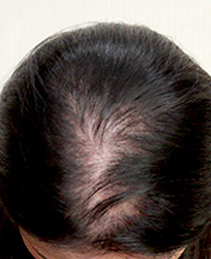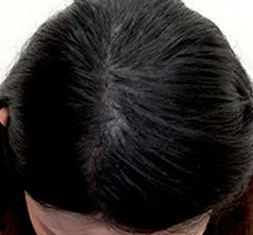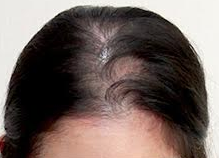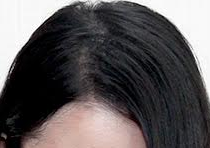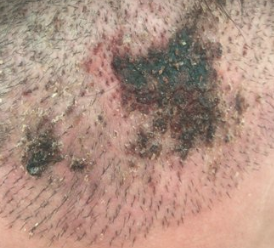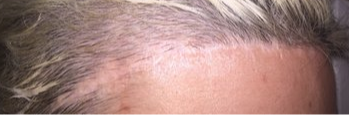In an article published in a peer-reviewed journal (https://jddonline.com/articles/dermatology/S1545961614P0484X), there appears to be at least one case report suggesting that Finasteride may have caused Melasma (acquired hypermelanosis). In the article, there is a suggestion as to its cause.
I have noticed surgeons advertise combining the two hair transplant methods FUT and FUE in 1 surgery. What are the benefits of combining FUE and FUT? Is it better than using one method? Do you combine them when you do surgery?
If a patient and a doctor agree that they want to push the number of grafts, then combining the FUE and strip surgery is a reasonable way to do this without over-harvesting with FUE alone. The strip surgery has an advantage of harvesting donor grafts in what we surgeons call the “sweet spot”: the place where the grafts are most concentrated and usually safe. Some doctors push the FUE too high, and when they do, they develop balding to some degree in the donor area. So, combining FUE and strip surgeries is a reasonable option for those who want to maximize the number of grafts in a single session. See here for impact on over-harvesting the donor area with FUE: https://newhair.com/donor-area/
This does not look like scabbing, but rather two areas of necrosis (death of the skin in the blackened area). The pink color around the larger black area indicates an early infection that is spreading out from the necrotic area. Return to your surgeon and ask about this. If I am correct, you will have a real problem that will require a lot of wound care. This is a terrible complication of a hair transplant.
One of the complications of a ‘hairline lowering’ or ‘hairline advancement surgery’ is hair loss. When it occurs, it exposes the scar from the advancement surgery. The best and only treatment for this is a hair transplant which can effectively bury the entire scar and fill in the thinning area behind the scar as well. Hair loss can be very extensive, losing the entire frontal area back up to 3-4 inches from the incision, but on the rare times that this happens, in women, this always reverses and the hair loss returns
I had my hair transplant and took Propecia. I had no hair loss, so a year afterward I stopped the Propecia and felt secure that I would not experience hair loss. Now 1 and a half years later, I am losing hair. Is this delayed shock loss?
You must remember that the hair loss process is progressive, so even if you get past the hair transplant and the shock loss, it does not mean that you stopped losing hair.
A study was performed on how the skin of mice removes inks from tattoos. Both mice and humans have ‘clean-up cells’ called macrophages. Human macrophages work more slowly than mouse macrophages and appear to ‘hold on’ to tattoo ink for a much longer period of time.
https://www.sciencenews.org/article/inked-mice-hint-how-tattoos-persist-people
I have been doing some research regarding scalp hair density. Currently, hair transplant doctors use Haircheck device to observe changes in density as well as caliber in comparison to the donor (control). Most doctors say haircheck numbers should be exactly the same at various points of the scalp for a nonbalding male. After doing some light research, I learned that you are born with a finite amount of hair follicles, and never develop any more hair follicles.
In my theory, and please correct me if I’m wrong, for your hmi number from haircheck to be exactly the same at all points of your scalp, your head would have to grow perfectly symmetrical to the way it was shaped at birth. If your head grows more in length than width, this would create a slight variation of the top of the scalp vs the donor area, as it is stretch further. What are your thoughts? I have to say from reading your blog you seem to be the most down to earth, a straight shooter in the industry.
The Haircheck measurements are a mechanical measurement which is slightly error-prone. I generally take 10% variation of the measurements in consideration as I use the instrument. Still, a 10% error rate is acceptable, but I do believe that hair is uniformly spread around the scalp.
Thank you, Dr. Rassman. I know I am definitely thinning. Especially after shaving my hair. In certain lighting it looked like I had no hair in my corners and I could see straight through to the scalp. I have been using minoxidil with a bunch of hair sprouting along the hairline. And a great change in density. I did have a question for you though, how long would minoxidil keep my hairline? And if I start on finasteride, how long would that keep my hairline. I am being optimistic but I am hoping it extends my current density for the next decade if I use both together. I am also very hopeful that there will be better alternatives in the next decade, or quite possibly a cure.
I also would rather not consult my doctor as I know it is very obvious I am experiencing hair loss. I mean, I will have to when I go for finasteride. But I am someone who participates in homeopathy up to a point. So I would rather not alter my hormones unless it is my last resort.
Combining both minoxidil and finasteride will give you the best opportunity to hold on to your hair. I always tell my patients to look at hair loss as a ‘tug of war’, with treatment on one side and the hair loss process on the other side. As long as the pull from the medications is stronger than the genetic pull, you win. When the pull reverses, hair loss is the consequence.
This is his answer to me: “Thanks for your reply. You bring up a very good point that if I continue to bald behind the transplant it will look strange, however, if that does occur, I do plan on chasing it with further HT’s in the future. I positioned myself in a career where I can financially do this and am very aware that this is not a “quick fix”. I see this initial transplant as the first step in a long process. Please continue to voice your thoughts and concerns.”
If you go forward with this plan, be sure to put together a good Master Plan for your future, and include an assessment of your depleting donor supply, which will occur as you do more and more hair transplants. You must make sure that you never get into a situation where you will run out of hair.
This is an interesting perspective on the balding male from a woman:
https://www.thecut.com/2014/12/i-love-watching-men-worry-about-balding.html
Pimples and acne on scalp with minoxidil and dermarolling . HELP ! from tressless
You could be developing infections from the dermaroller as it pierces the skin and opens the skin to an invasion of bacteria on the scalp. Minoxidil just makes the blood supply better and could potentiate the infections you are seeing.
Pilofocus is also called piloscopy. I have seen this presentation by Dr. Wessley, and I am very unimpressed. It seems like a cumbersome procedure that is slow, and the surgeon will not be able to perform any significant number of FUE grafts during the surgery. FUE is not very scarring when performed by the right surgeon with the traditional approach I defined in the literature, so I don’t see a place for piloscopy regardless of any FDA clearance which may or may not occur.

